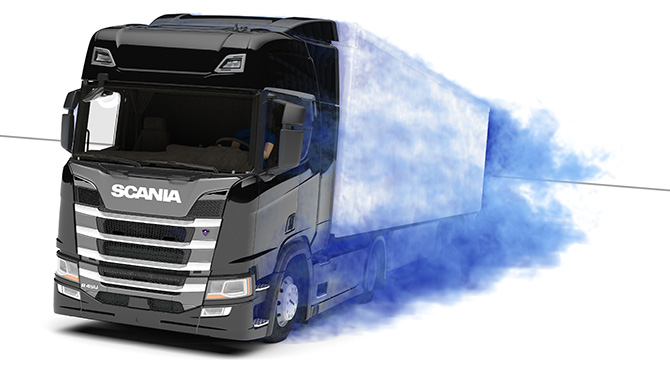PDC-Scania Collaboration
Mattias Chevalier, Scania

Scania has been in a strategic partnership with PDC since 2010 and thanks to this collaboration, Scania has access to world-class high-performance computing (HPC) resources. As a manufacturer of heavy commercial vehicles, Scania naturally has large in-house computational resources to carry out various forms of simulation studies covering many different disciplines, for example, finite element method (FEM) and computational fluid dynamics (CFD) simulations. Running benchmarking performance tests on a larger system than we could motivate to host on our own gives important input when extending in-house computer cluster resources. A massively parallel system is of great use when it comes to balancing peak load situations, and also when fast turnaround times are needed.
The large number of cores accessible through the collaboration with PDC has become an important and necessary asset in order for Scania’s R&D organization to deliver simulation results in time. To date several software applications have been used, but our primary focus has been on computational fluid dynamics (CFD) simulations using the tools PowerFLOW, OpenFOAM and STAR-CCM+. Many simulations have been dedicated to studies of complete vehicles where different vehicle properties have been optimized. Performance evaluations of more tools are currently ongoing and the range of software we utilize will most likely be increased in the near future. Our collaboration with PDC also simplifies the dialogue process with other experts in the area and thus promotes effective and effcient knowledge transfer.
Simulation has become an important component of the product development process at Scania. By validating early designs through simulations, costly problems later in the development process can be avoided. In addition, simulations can be used to evaluate a larger range of concepts in order to optimize the most important properties of the products. Utilizing high-performance computing resources for simulation-based product development has enabled Scania to shorten lead times in our development process while building fewer physical prototypes and also improving both the quality and properties of our products.

In light of the benefits of the collaboration to date, Scania and PDC have agreed to continue our cooperation in the area of high-performance computing, focusing on the following areas:
- implementing related research and development projects with a focus on solving technical problems, developing methods and so forth,
- exchanging relevant HPC skills and knowledge,
- undertaking thesis work and support of postgraduate education in the HPC area, and
- making computing capacity at PDC available to Scania. The collaboration currently co-funds part of Beskow, PDC’s Cray XC40 cluster, which corresponds to approximately 16,000 cores of continuous running.
“The collaboration with PDC has significantly decreased the turnaround time for large-scale simulations both due to the large capacity of the systems at PDC and due to assistance from PDC’s HPC experts,” says Magnus Pettersson, Engineering Director at Truck Chassis Development at Scania.